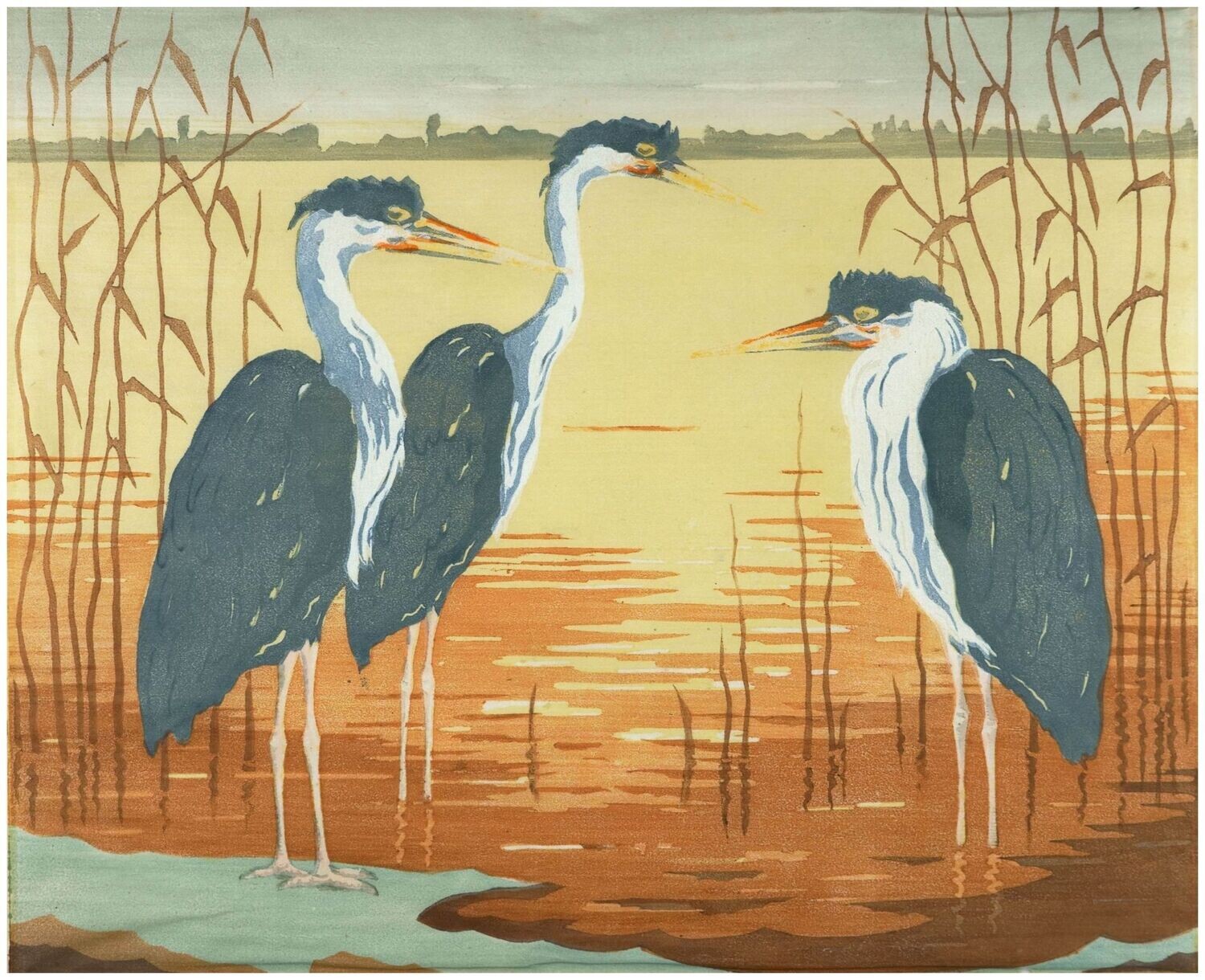Hayder, Rudolf (1. Hälfte 20. Jh.), Reiher
Rudolf Hayder(tätig in der 1. Hälfte 20. Jh.), Reiher. Farbholzschnitt auf dünnem Japanpapier, 24 x 29 cm (Darstellung), 29 x 36 cm (Blattmaß), rechts unten mit „R. Hayder“ handsigniert und als „Reiher“ handbetitelt. Links unten handvermerkt „Orig.[inal] Holzschnitt, Handabdruck“.
- In den Randbereichen etwas und sehr vereinzelt in der Darstellung stockfleckig, minimales Loch über der Signatur, Knickspuren. Rückseitig an den Rändern mit Falzresten einer alten Montage.
- Flammende Flächigkeit -
Im Rahmen des französischen Japonismus wurde der im asiatischen Raum verbreitete Farbholzschnitt für die westliche Kunst wiederentdeckt. Die damaligen Künstler, wie Édouard Manet, Claude Monet, Edgar Degas, Paul Gauguin und Vincent van Gogh, inspirierte neben der kulturellen Prägung, vor allem die Flächigkeit der Bildräume. Damit wurden die Farbholzschnitte zum wichtigen Moment bei der Ausprägung der vom Impressionismus begründeten modernen Bildauffassung.
Und auch bei den „Reihern“ von Rudolf Hayder ist die flächenmäßige Entwicklung des Bildraums für die Bildwirkung entscheidend. Die vom Schilf umgebenden Reiher werden vom gelben Fond des Sees hinterfangen, an den sich der dunkle blaugrünliche Streifen des anderen Ufers und darüber der in hellerem Blaugrün gehaltenen Himmel anschließen. Formal gesehen handelt es sich um eine Abfolge von Flächen, die durch die motivische Rückbindung allerdings eine Raumwirkung in der Flächigkeit entfalten. Diese Räumlichkeit in der Fläche erzeugt eine intensive Bildwirkung. Hayder steigert diese Wirkung durch den aufflammenden See. Farblich wird das Wasser zu einem Sonnenuntergang. Das Gelb färbt sich zum Ufer hin rotbraun, um dann in einem Braunrot auszuklingen, während das Ufer ein wasserartiges Türkis aufweist. Dass diese Farbstimmung etwas Ephemeres hat, wird von den meisterhaft ausgeführten Wasserreflexionen des Schilfs und der Beine der Reiher veranschaulicht.
In Japan wird dem Reiher eine wichtige Bedeutung beigemessen. Ihm wurde nachgesagt, über 1000 Jahre alt werden zu können. Daher gilt er als Symbol der Langlebigkeit. Zudem heißt es, er würde im Leben nur einen Partner wählen, weshalb er auch für die Treue einsteht.
Ohne diese Bedeutungen direkt aufzugreifen, entwickelt Hayder eine Beziehung der Reiher untereinander. Links stehen zwei der Vögel mit gerecktem Hals, während das Tier ihnen gegenüber seinen Kopf eingezogen hat. Es entsteht eine für den Betrachter nicht zu entschlüsselnde Dialogizität, die wiederum vom flammenden Wasser befeuert wird.

